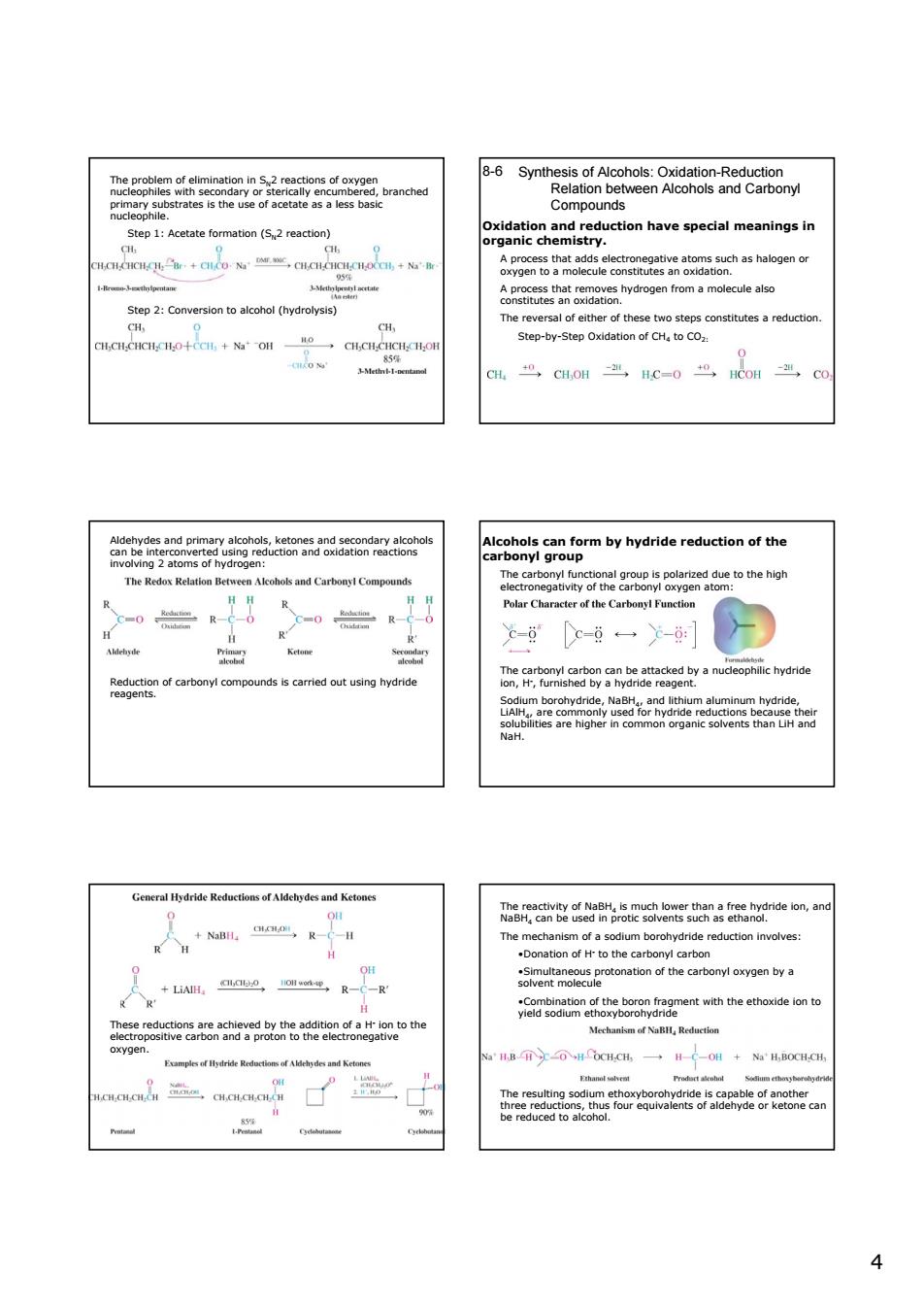正在加载图片...

Step1:Acetate formation (S reton) a speal meaning in Step-by-Step Oxidation of CHtoCO ICH.CH.ON by hydride reduction of the -0R c-8e-6-:] ? de.Nnd m alum m hydride, reduction involves 人 soiNemtaneseciBrotona carbonyl oxyen by a yreiaoateceonreemetwhtheehodeont CC一H-0l+为'H,0ag aece8w然eae 4 4 The problem of elimination in SN2 reactions of oxygen nucleophiles with secondary or sterically encumbered, branched primary substrates is the use of acetate as a less basic nucleophile. Step 1: Acetate formation (SN2 reaction) Step 2: Conversion to alcohol (hydrolysis) Synthesis of Alcohols: Oxidation-Reduction Relation between Alcohols and Carbonyl Compounds 8-6 Oxidation and reduction have special meanings in organic chemistry. A process that adds electronegative atoms such as halogen or oxygen to a molecule constitutes an oxidation. A process that removes hydrogen from a molecule also constitutes an oxidation. The reversal of either of these two steps constitutes a reduction. Step-by-Step Oxidation of CH4 to CO2: Aldehydes and primary alcohols, ketones and secondary alcohols can be interconverted using reduction and oxidation reactions involving 2 atoms of hydrogen: Reduction of carbonyl compounds is carried out using hydride reagents. Alcohols can form by hydride reduction of the carbonyl group The carbonyl functional group is polarized due to the high electronegativity of the carbonyl oxygen atom: The carbonyl carbon can be attacked by a nucleophilic hydride ion, H- , furnished by a hydride reagent. Sodium borohydride, NaBH4, and lithium aluminum hydride, LiAlH4, are commonly used for hydride reductions because their solubilities are higher in common organic solvents than LiH and NaH. These reductions are achieved by the addition of a H- ion to the electropositive carbon and a proton to the electronegative oxygen. The reactivity of NaBH4 is much lower than a free hydride ion, and NaBH4 can be used in protic solvents such as ethanol. The mechanism of a sodium borohydride reduction involves: •Donation of H- to the carbonyl carbon •Simultaneous protonation of the carbonyl oxygen by a solvent molecule •Combination of the boron fragment with the ethoxide ion to yield sodium ethoxyborohydride The resulting sodium ethoxyborohydride is capable of another three reductions, thus four equivalents of aldehyde or ketone can be reduced to alcohol